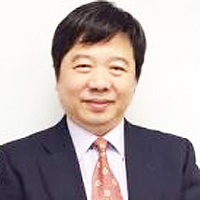Contrast-enhanced Susceptibility Weighted Imaging (CE-SWI) for the Characterization of Musculoskeletal Oncologic Pathology: A Pictorial Essay on the Initial Five-year Experience at a Cancer Institution
Published on: 2nd April, 2024
Susceptibility-weighted imaging (SWI) is based on a 3D high-spatial-resolution, velocity-corrected gradient-echo MRI sequence that uses magnitude and filtered-phase information to create images. It SWI uses tissue magnetic susceptibility differences to generate signal contrast that may arise from paramagnetic (hemosiderin), diamagnetic (minerals and calcifications) and ferromagnetic (metal) molecules. Distinguishing between calcification and blood products is possible through the filtered phase images, helping to visualize osteoblastic and osteolytic bone metastases or demonstrating calcifications and osteoid production in liposarcoma and osteosarcoma. When acquired in combination with the injection of an exogenous contrast agent, contrast-enhanced SWI (CE-SWI) can simultaneously detect the T2* susceptibility effect, T2 signal difference, contrast-induced T1 shortening, and out-of-phase fat and water chemical shift effect. Bone and soft tissue lesion SWI features have been described, including giant cell tumors in bone and synovial sarcomas in soft tissues. We expand on the appearance of benign soft-tissue lesions such as hemangioma, neurofibroma, pigmented villonodular synovitis, abscess, and hematoma. Most myxoid sarcomas demonstrate absent or just low-grade intra-tumoral hemorrhage at the baseline. CE-SWI shows superior differentiation between mature fibrotic T2* dark components and active enhancing T1 shortening components in desmoid fibromatosis. SWI has gained popularity in oncologic MSK imaging because of its sensitivity for displaying hemorrhage in soft tissue lesions, thereby helping to differentiate benign versus malignant soft tissue tumors. The ability to show the viable, enhancing portions of a soft tissue sarcoma separately from hemorrhagic/necrotic components also suggests its utility as a biomarker of tumor treatment response. It is essential to understand and appreciate the differences between spontaneous hemorrhage patterns in high-grade sarcomas and those occurring in the therapy-induced necrosis process in responding tumors. Ring-like hemosiderin SWI pattern is observed in successfully treated sarcomas. CE-SWI also demonstrates early promising results in separating the T2* blooming of healthy iron-loaded bone marrow from the T1-shortened enhancement in bone marrow that is displaced by the tumor.SWI and CE-SWI in MSK oncology learning objectives: SWI and CE-SWI can be used to identify calcifications on MRI.Certain SWI and CE-SWI patterns can correlate with tumor histologic type.CE-SWI can discriminate mature from immature components of desmoid tumors.CE-SWI patterns can help to assess treatment response in soft tissue sarcomas.Understanding CE-SWI patterns in post-surgical changes can also be useful in discriminating between residual and recurrent tumors with overlapping imaging features.
Ciliated Hepatic Cyst: Report of a Case and Review of the Literature
Published on: 23rd September, 2024
The ciliated hepatic cyst of the anterior intestine is a less frequent benign entity that arises from the alteration in the migration of embryological remains. Most of them are found in the left lobe of the liver, especially in segment IV. Its wall is covered by a pseudostratified ciliated columnar epithelium, a layer of connective tissue, smooth muscle, and a surrounding fibrous outer layer. We present the case of a 61-year-old man who, in the context of a scheduled admission for drainage of an intraabdominal abscess, was incidentally discovered to have a hepatic lesion of cystic aspect. The anatomopathological diagnosis was that of a ciliated hepatic cyst. Due to its low frequency in clinical practice (in part due to its incidental character), a review of the case and a review in the literature of the peculiarities of said entity are proposed.
Septic Shock on Bartholinitis: Case Report and Modern Surgical Approaches
Published on: 7th March, 2025
Bartholinitis, or Bartholin's gland abscess, is a relatively common gynecological condition among women of reproductive age. Its annual incidence is estimated at approximately 0.5 per 1,000 women, which corresponds to a lifetime cumulative risk of about 2%. The condition primarily affects patients between 20 and 50 years old, with a peak frequency observed between 35 and 50 years.After menopause, due to the natural involution of the gland, Bartholin's cysts and abscesses become less frequent, although they can still occur. Moreover, in women over 50, the appearance of a new mass in the gland region should prompt caution, as it may, in rare cases, indicate a carcinoma of the Bartholin's gland or an adjacent vulvar cancer. Therefore, for patients over 40 presenting with a newly emerged cyst or abscess, clinical guidelines recommend performing a biopsy or excision to rule out malignancy. We present the case of a 50-year-old woman with no significant medical history, who was urgently referred to the gynecological emergency department due to confusion, unexplained fever of 40 °C, and resistant leucorrhoea following a week of corticosteroid antibiotic therapy. Clinical examination revealed a large, tender right vulvar mass, indicative of an acute Bartholin's abscess. The patient exhibited signs of septic shock and was admitted to the ICU. Following a diagnosis of sepsis, broad-spectrum antibiotic therapy was initiated, alongside fluid resuscitation and norepinephrine support. Surgical drainage of the abscess confirmed the presence of E. coli. The patient's condition improved rapidly, and she was discharged on postoperative day 8 with no complications. This case underscores that while Bartholin's abscess is typically benign, severe complications, including septic shock, can occur—especially in patients over 50. The appearance of a new Bartholin's region mass in older women should prompt consideration of malignancy, necessitating biopsy or excision. Recent studies compare various therapeutic approaches including simple incision and drainage, Word catheter placement, marsupialization, silver nitrate application, and complete gland excision. Each method has its advantages and drawbacks, with marsupialization offering lower recurrence rates and higher patient satisfaction in many instances.
Browse by Subjects
Chemistry Group Journals
Pharma Group Journals
Mathematics & Physics Group Journals
Clinical Group Journals
- Archives of Food and Nutritional Science
- Annals of Dermatological Research
- International Journal of Clinical Microbiology and Biochemical Technology
- Journal of Advanced Pediatrics and Child Health
- Journal of Pulmonology and Respiratory Research
- Insights in Clinical and Cellular Immunology
- International Journal of Clinical Anesthesia and Research
- Journal of Clinical Intensive Care and Medicine
- Journal of Clinical, Medical and Experimental Images
- Journal of Neuroscience and Neurological Disorders
- Insights in Veterinary Science
- Journal of Stem Cell Therapy and Transplantation
- Archives of Asthma, Allergy and Immunology
- Journal of Child, Adult Vaccines and Immunology
- Archives of Cancer Science and Therapy
- Clinical Journal of Nursing Care and Practice
- Annals of Clinical Gastroenterology and Hepatology
- Journal of Hematology and Clinical Research
- Archives of Pathology and Clinical Research
- Annals of Clinical Hypertension
- Journal of Oral Health and Craniofacial Science
- International Journal of Clinical and Experimental Ophthalmology
- Journal of Radiology and Oncology
- Journal of Clinical Nephrology
- Archives of Clinical and Experimental Orthopaedics
- International Journal of Bone Marrow Research
- International Journal of Clinical Virology
- New Insights in Obesity: Genetics and Beyond
- Advanced Treatments in ENT Disorders
- Journal of Clinical Advances in Dentistry
- Insights on the Depression and Anxiety
- Heighpubs Otolaryngology and Rhinology
- Clinical Journal of Obstetrics and Gynecology
- Archives of Surgery and Clinical Research




